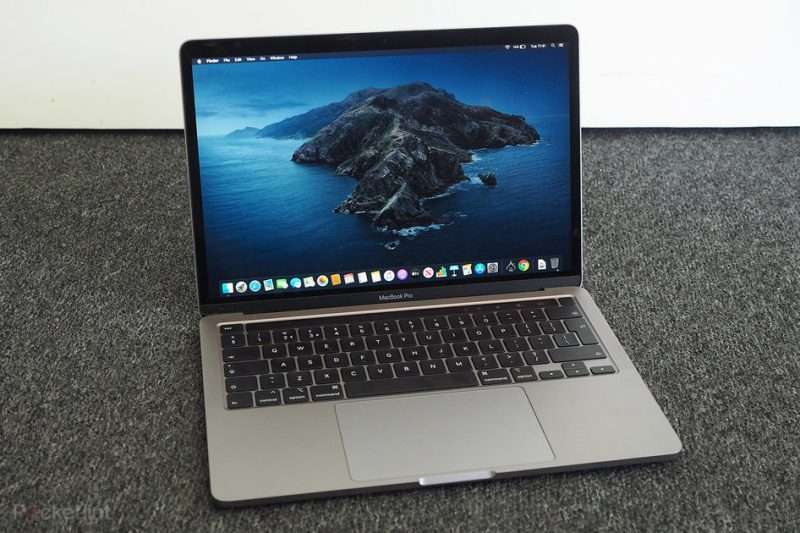If you wish to factory reset your Mac, the last step is to reinstall macOS in recovery mode. Furthermore, if your Mac is acting up, such as when the Macintosh HD is not mounted in Disk Utility, the MacBook won’t start on, or the iMac keeps shutting down, you may do a macOS reinstallation as a last option to get the Mac back on track.
When you try to boot your Mac into recovery mode to reinstall macOS, it displays the error number -2003F with an earth symbol and an exclamation point. You restart Mac and try again, but the error code remains on the screen, which is inconvenient! Take it easy; after reading this essay, you will understand how to resolve the Mac startup problem -2003F.
What Does Mac Startup Error 2003F Mean?
When the Mac recovery mode does not function, the alternate way is to boot the Mac into Internet recovery mode, which is an Internet-based variant of recovery mode with high internet connection requirements. The current internet connection on your Mac is weak or unstable, as shown by the earth symbol and the exclamation point, preventing the system from loading recovery tools from Apple’s servers over the Internet.
That example, the error number -2203F is often caused by a faulty internet connection. Furthermore, the Mac error -2003F might be related to a virus infection, hard disc issues, or an incomplete erasure of the starting disc. We will investigate these potential problems in order to propose remedies. Seeing another -1008F Mac startup issue or 3403F macOS reinstallation error code?
2003f Mac Error: Solutions to Resolve This Error
After you’ve determined the meaning and causes of the Mac startup error code -2003F, you can go on to the particular remedies. Once the problem has been resolved, you may proceed with the reinstallation of macOS on the Mac. There are five options listed below that you may attempt one at a time to restore normalcy to your Mac.
-
Make sure you have a strong internet connection.
Because the internet connection is the most common reason for the error number -2203F on Mac, you should first verify your internet connection. You may unplug the Wi-Fi, restart the router, and then rejoin. If it doesn’t work, try connecting to another Wi-Fi network. If you are still unable to circumvent the problem -2003F, connect your Mac to your router using an ethernet connection. Reboot your Mac into Internet recovery mode to check whether the problem has been resolved.
-
Use First Aid to repair disc issues.
If the disc from which you want to install macOS is damaged or faulty, it may also result in a number of issues, including the error code -2003F. As a result, you may use macOS Disk Utility’s First Aid tool to correct disc issues while in recovery mode.
-
- Start your Mac in macOS Recovery mode.
- Click Continue after selecting Disk Utility from the macOS utility menu.
- Select Show All Devices from the View menu.
- In the left sidebar, choose the Mac hard disc or starting volume.
- On the Disk Utility’s top menu, choose First Aid.
- On the pop-up box, click Run to confirm that you want to run First Aid, then click Continue.
- When the procedure is finished, click Done to dismiss First Aid.
-
Erase The Boot Disc Completely.
Before installing macOS on your Mac, you should format the startup drive to remove any possible startup disc corruptions. On your Mac, an incomplete wipe of the starting drive may result in the error number -2203F. In recovery mode, follow these steps to delete the boot drive.
-
- Start your Mac in macOS Recovery mode.
- Select Disk Utility from the utility window and press the Continue button.
- To erase all added volumes to Macintosh HD, use the delete volume (-) button in the toolbar.
- Now, in the sidebar, pick Macintosh HD and click Erase in the toolbar.
- Set the name to Macintosh HD and the format to APFS, as advised.
- If there is a volume group, click Erase instead.
-
Consider using Fallback Recovery OS.
In addition to the regular recovery mode and internet recovery mode for troubleshooting malfunctioning Mac computers, Fallback Recovery OS, often known as FrOS, is a secret technique on Apple Silicon Macs.
-
- Shut off your Mac completely.
- TWICE QUICKLY press and hold the Touch ID button.
- Hold down the Touch ID button until you see the message “Loading startup choices.”
- Continue to the recovery utility window by clicking Options.
- Then choose Reinstall macOS and proceed as directed.
-
Using a bootable USB installer, reinstall macOS.
Unfortunately, if all of the aforementioned approaches fail to reinstall macOS, it is most probable that your internal starting drive has major issues. Why not boot your Mac from a USB drive? You may make a bootable USB installer to update or downgrade macOS on multiple Macs, repair unbootable Macs, and reinstall macOS. Here’s how it’s done:
-
- Prepare a working Mac and an empty APFS-formatted USB for macOS 10.13 and later.
- Download the chosen macOS from the Apple Store or Apple’s website, but do not install it.
- Connect the USB cable to the second Mac and start Terminal.
- Copy and paste the target macOS version’s command below and click Return, replacing MyVolume with the name of your USB drive.
- Monterey:
sudo /Applications/Install\ macOS\ Monterey.app/Contents/Resources/createinstallmedia –volume /Volumes/MyVolume
- Big Sur:
sudo /Applications/Install\ macOS\ Big\ Sur.app/Contents/Resources/createinstallmedia –volume /Volumes/MyVolume
- Catalina:
sudo /Applications/Install\ macOS\ Catalina.app/Contents/Resources/createinstallmedia –volume /Volumes/MyVolume
- Mojave:
sudo /Applications/Install\ macOS\ Mojave.app/Contents/Resources/createinstallmedia –volume /Volumes/MyVolume
- High Sierra:
sudo /Applications/Install\ macOS\ High\ Sierra.app/Contents/Resources/createinstallmedia –volume /Volumes/MyVolume
Complete Video to Fix Mac Startup Error Code 2003f





